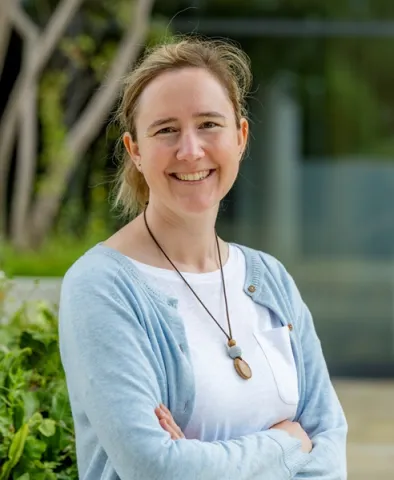Project overview
This project aims at resolving airflow in and around buildings to better understand urban air pollution. According to the World Health Organization (WHO), 80% of people living in urban areas are exposed to unsafe levels of air pollution and with it an increased risk of heart disease, lung cancer, and respiratory disease. This research will study how pollution disperses in urban areas, in order to improve the pollution dispersion models used to make air quality forecasts and that inform urban planning and policy.
Experiments will be conducted on scale models in a controlled laboratory flow facility. The measured flow patterns can then be related to full-scale atmospheric flows, in the same way wind tunnel tests of scale models provide insights to vehicle aerodynamics. The majority of experiments will take place in a water flume facility and passive tracers will be released at key points around the model, as a surrogate for air pollution. The use of the water flume permits the use of advanced laser-based measurement tools that can capture full two-dimensional quantitative images of the dispersion process both at the fine scales near the pollution sources and at the city scale. This is the key feature that differentiates this work from previous wind tunnel and in-situ measurements of dispersion, which are typically limited to point measurements. The fellows is uniquely positioned to conduct these novel spatial measurements due to her expertise with the experimental techniques and her previous background analysing coherent structures and mixing in canonical turbulent shear flows. The University of Southampton is particularly suitable location for this research because of the combination of having a suitable water flume facility as well as the required high-resolution camera and laser systems.
This study is particularly timely as governments focus on improving environmental sustainability and air quality in cities. These results will improve our ability to inform local council and industry on how pollution disperses around the city, aiding them in making decisions impacting financial and environmental sustainability and public health and safety. In addition to these societal impacts, these results will have academic impact by improving meteorological models. Existing dispersion models focus on time-averaged predictions; however, these models struggle to predict spatio-temporal fluctuations and peak exposures, especially near the source. Understanding these dynamics is important for air quality, as even short term exposure to toxic gases and airborne particulate matter can have adverse health impacts. These results will improve our understanding of the underlying physics in order to guide theories and improve models for predicting the dynamics of pollution dispersion in complex urban regions.
Experiments will be conducted on scale models in a controlled laboratory flow facility. The measured flow patterns can then be related to full-scale atmospheric flows, in the same way wind tunnel tests of scale models provide insights to vehicle aerodynamics. The majority of experiments will take place in a water flume facility and passive tracers will be released at key points around the model, as a surrogate for air pollution. The use of the water flume permits the use of advanced laser-based measurement tools that can capture full two-dimensional quantitative images of the dispersion process both at the fine scales near the pollution sources and at the city scale. This is the key feature that differentiates this work from previous wind tunnel and in-situ measurements of dispersion, which are typically limited to point measurements. The fellows is uniquely positioned to conduct these novel spatial measurements due to her expertise with the experimental techniques and her previous background analysing coherent structures and mixing in canonical turbulent shear flows. The University of Southampton is particularly suitable location for this research because of the combination of having a suitable water flume facility as well as the required high-resolution camera and laser systems.
This study is particularly timely as governments focus on improving environmental sustainability and air quality in cities. These results will improve our ability to inform local council and industry on how pollution disperses around the city, aiding them in making decisions impacting financial and environmental sustainability and public health and safety. In addition to these societal impacts, these results will have academic impact by improving meteorological models. Existing dispersion models focus on time-averaged predictions; however, these models struggle to predict spatio-temporal fluctuations and peak exposures, especially near the source. Understanding these dynamics is important for air quality, as even short term exposure to toxic gases and airborne particulate matter can have adverse health impacts. These results will improve our understanding of the underlying physics in order to guide theories and improve models for predicting the dynamics of pollution dispersion in complex urban regions.
Staff
Lead researchers
Collaborating research institutes, centres and groups
Research outputs
H.D. Lim & Christina Vanderwel,
2025
Type: conference
H.D. Lim & Christina Vanderwel,
2025, International Journal of Heat and Fluid Flow, 115
Type: article
Tomos Rich & Christina Vanderwel,
2024, Boundary-Layer Meteorology, 190(8)
Type: article
H.D. Lim, Timothy G. Foat, Simon T. Parker & Christina Vanderwel,
2024, Building and Environment, 259
Type: article
Tomos Rich & Christina Vanderwel,
2024
Type: conference
H.D. Lim, Timothy G. Foat, Simon T. Parker & Christina Vanderwel,
2024, Building and Environment, 250
Type: article
